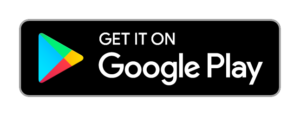
UX/UI Designer
Background:
This was my first full-time position after graduating from university. The POKET team was looking for a UX/UI designer who is passionate about combining design expertise with social impact and could help to develop a comprehensive prototype for the POKET app.
My Role:
- Established design guidelines for future product developments
- Designed POKET’s desktop portal and consumer-facing app
- Re-designed POKET’s website
- Created various graphics and branding materials to further establish POKET’s brand. (Illustrations, infographic, video, graphs, business card, etc).
The Problem
Globally, more than 1 billion merchants are undocumented, meaning that customers cannot find them, cities cannot plan for them, and entrepreneurs cannot learn from them. As a result, small shops are digitally invisible to customers, and cities lack the data to help inform the infrastructure developments to serve them.
The Solution
Poket is an application that incentivizes people to crowdsource information about small merchants in emerging economies. The app prompts users to contribute information to the system and verify others’ uploads in exchange for redeemable rewards, which encourages reliable input.
App Prototype
Generally, the speed of the internet and availability of technology in emerging markets where are target users reside is not as advanced as it is in more developed markets. This led to a major constraint for the project; our target users primarily use older devices with small screen sizes and low resolution.
I was initially given a very early stage prototype that was used as a proof of concept while POKET was seeking funding. Starting with sketches and moving onto low-fidelity mockups, I iterated on the prototype a number of times and added new user flows.
The entire project has over 40 screens, so below is a user flow that I feel best displays the process I went through and shows the progression of the design. The screens attached below show the most crucial user flow within the app; adding a merchant who is unmapped to the registry
First Iteration:
There were additional features I wanted to add to the app, but because of the technology limitations and other restrictions in emerging markets, I had to simplify the design. This is evident when comparing early iterations to the final user flow. For example, the ability for users to check quests was removed. Instead, the same result has been achieved by asking users if they would like to answer additional questions once they have finished adding a merchant. The copy was also cut down significantly which made the content look cleaner when displayed on smaller screens and much easier for users to understand.
Final Iteration:
Results
The biggest challenge I faced when solving this problem was that the majority of our target users have older devices with small screen sizes and low resolutions. Designing with this constraint in mind was extremely difficult, but as I learnt more about emerging markets and our target users, I discovered many interesting ways to simplify a design or a user flow while still achieving the same outcome and without sacrificing the core content.
If I had more time and was given the opportunity, I would have loved to user test the final iteration of the prototype with actual users, and potentially iterate once more before shipping the app. With that being said, after shipping the portal to enterprise clients and doing a soft launch of the mobile app in Nigeria, the incredible response we received has validated the POKET app as a viable solution. Download the app below.

